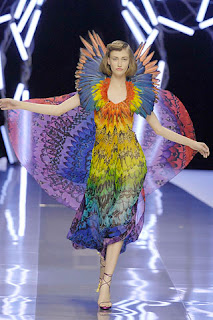 |
| Image from http://www.style.com/fashionshows/complete/F2010RTW-BASSOB |
The patterns are scanned on to the computer, then print designs are applied onto the pieces. After that, the marker of the garments are placed well so that the prints are digitalised to fit the pattern pieces and therefore to show the continuity of the print design around the body without breaking by the garment's seams.
 |
| Image from http://www.style.com/fashionshows/complete/S2008RTW-AMCQUEEN?page=2 |











